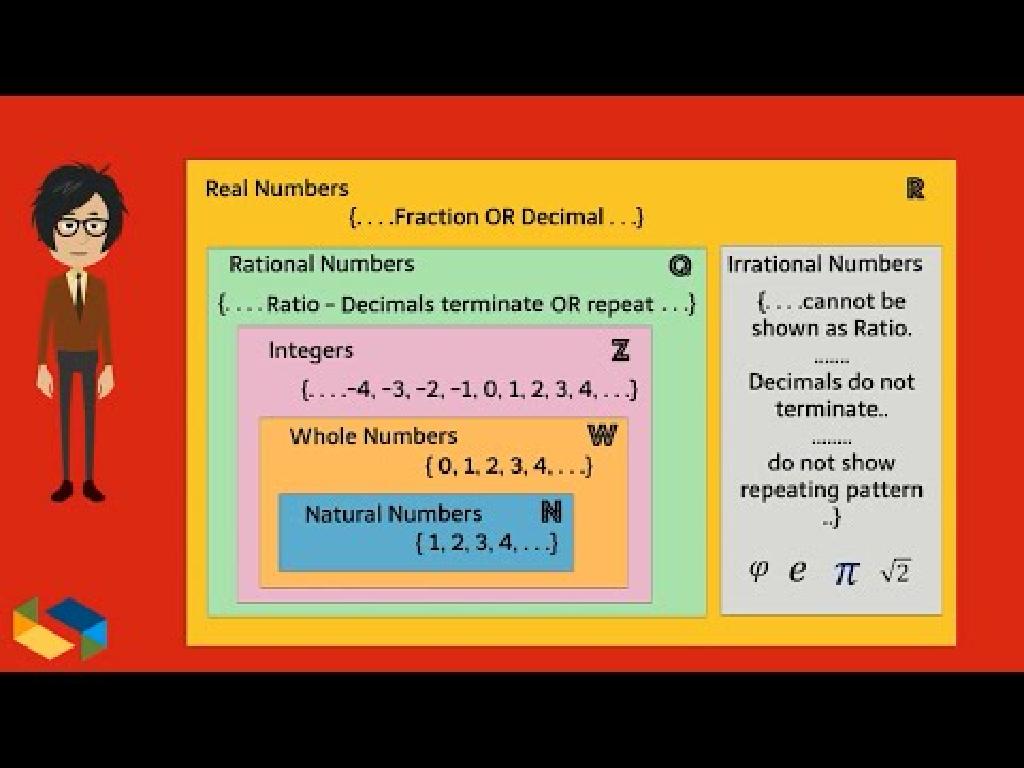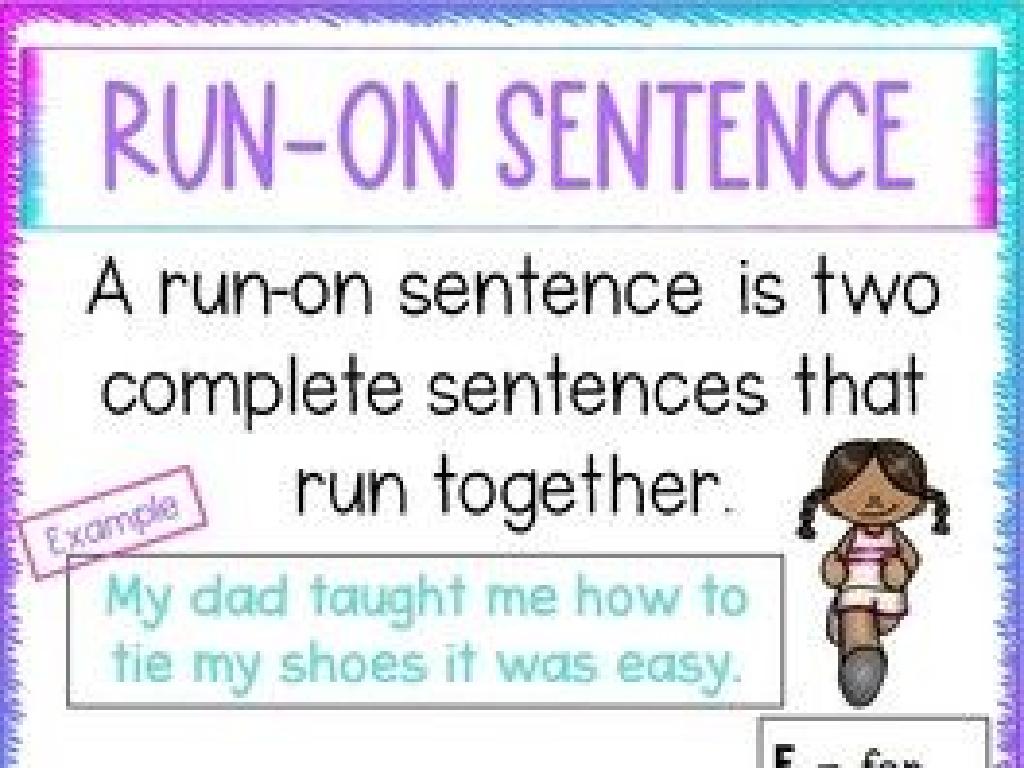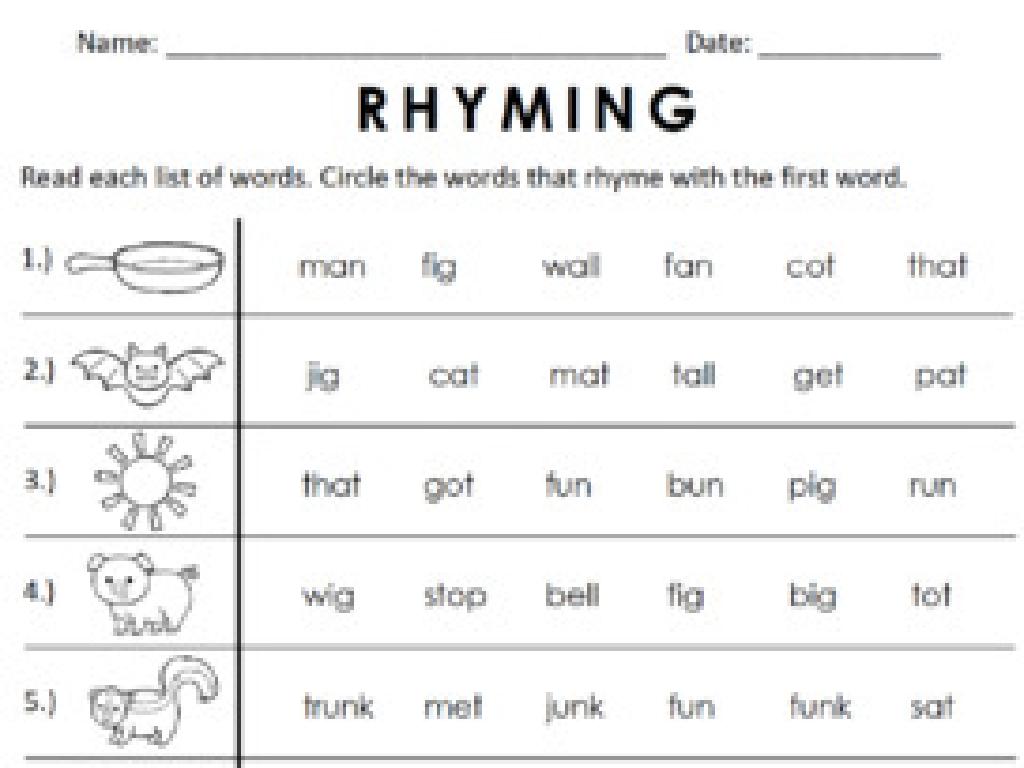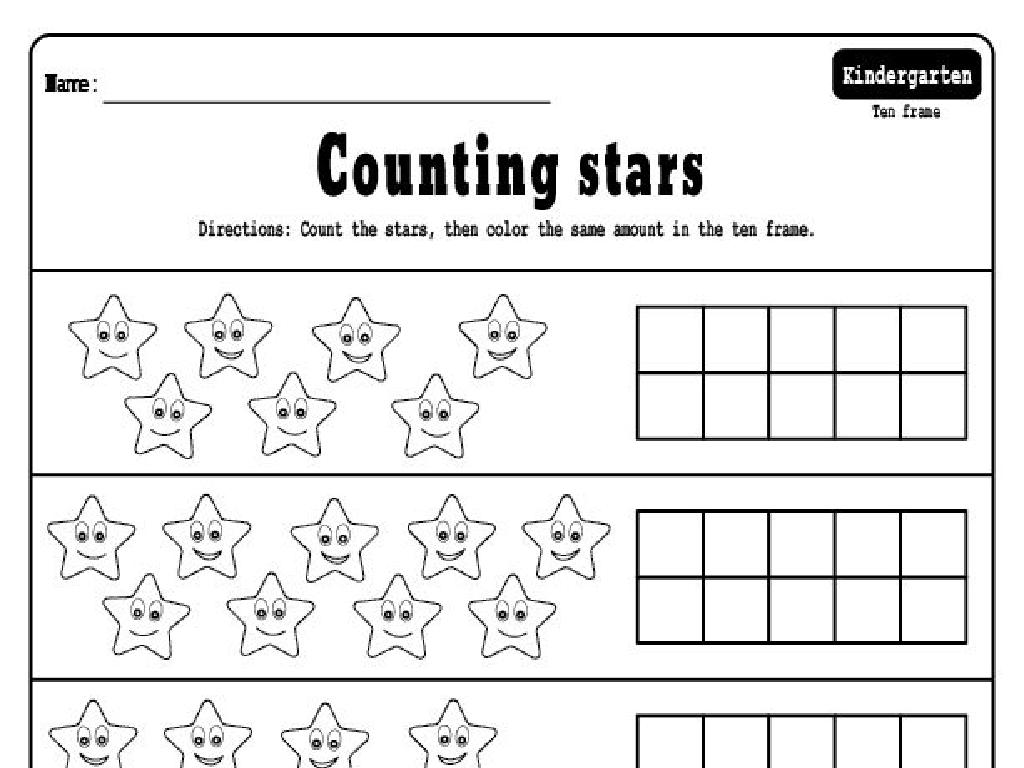Before, After, And Between - Up To 20
Subject: Math
Grade: Kindergarten
Topic: Counting Forward And Back To 20
Please LOG IN to download the presentation. Access is available to registered users only.
View More Content
Welcome to Counting!
– Greetings, young mathematicians!
– Today’s fun with numbers!
– Exploring before, after, and between
– What comes before 7? What’s after 10? Which number is between 13 and 15?
– Counting up to 20
– Practice counting from 1 to 20 together
|
This slide is designed to introduce Kindergarten students to the concepts of before, after, and between with numbers up to 20. Start the lesson with a warm welcome and an enthusiasm for numbers to engage the children. Explain that understanding the order of numbers is like knowing the order of days in a week. Use visual aids like number lines or counters to help them visualize the sequence of numbers. Encourage the children to participate by asking questions about number order and providing examples. For instance, ‘If we have 3 apples and get 1 more, what comes after 3?’ Use interactive activities such as singing counting songs or playing counting games to reinforce the lesson. The goal is to make the learning process enjoyable and interactive, fostering a positive attitude towards math.
Understanding Before, After, and Between
– ‘Before’ means the previous number
– If we have the number 10, ‘before’ is 9
– ‘After’ means the next number
– With the number 10, ‘after’ is 11
– ‘Between’ means the middle number
– The number 10 is ‘between’ 9 and 11
– Practice with numbers up to 20
|
This slide introduces the concepts of ‘before’, ‘after’, and ‘between’ as they relate to numbers up to 20. Start by explaining that ‘before’ refers to the number that comes just before another number in a sequence. Similarly, ‘after’ is the number that follows. ‘Between’ is used to describe a number that is in the middle of two other numbers. Use a number line as a visual aid to help students understand these concepts. For practice, ask students to identify numbers that come before, after, and between other numbers within the range of 1 to 20. Encourage them to use their fingers or counters to visualize the sequence of numbers and reinforce their understanding.
Let’s Count Before!
– Understanding ‘before’ in numbers
– What comes before number 5?
– If we’re at 5, the number just before is 4!
– Counting down to discover
– Let’s count backwards: 5…4
– Using a number line
– Look at the line: 4 is just before 5
|
This slide is aimed at teaching Kindergarten students the concept of ‘before’ in a sequence of numbers. Start by asking the question about the number that comes before 5 to engage the students. Then, count together with the class, emphasizing the backward counting concept. Use a number line as a visual aid to help students see the position of numbers and understand that the number before 5 is 4. Encourage the students to use their fingers or objects to count backward. This activity will help solidify their understanding of number order and prepare them for more complex counting tasks.
Let’s Count After!
– Understanding the ‘after’ concept
– What comes after number 5?
– If we have 5, the next number is 6
– Counting together is fun
– Using a number line
– Point to the number after 5 on the line
|
This slide is aimed at teaching Kindergarten students the concept of ‘after’ in a sequence of numbers. Start by explaining that ‘after’ means the next number in the counting order. Ask the students what number comes after 5 and wait for their responses to encourage participation. Then, count together from 1 to 6 to reinforce the sequence. Use a number line visual aid to help students visually identify the number that comes after 5. Encourage them to point to the number 6 on the number line. This interactive approach helps students understand the concept of counting forward and recognizing numbers in a sequence.
Finding the Number Between
– Understanding numbers 4 and 6
– 4 is before 5, and 6 is after 5
– Using a number line
– A number line helps us see the order of numbers
– Finding the middle number
– The number between 4 and 6 is 5
– Guess the number between
|
This slide is aimed at helping Kindergarten students understand the concept of finding a number that comes between two other numbers, using the example of 4 and 6. Start by explaining the position of numbers 4 and 6, and how they relate to each other. Introduce the number line as a visual aid to help them see the sequence of numbers and how each number has a place in that order. Guide them to identify that the number 5 comes after 4 and before 6. Encourage the students to guess the number before revealing the answer, to promote engagement and critical thinking. The activity can be made interactive by drawing a number line on the board or using physical number cards.
Practice Time: Before, After, and Between!
– Listen to the number I say
– Tell me the number before it
– If I say 10, what number comes before?
– Tell me the number after it
– If I say 10, what number comes after?
– Let’s practice with number 10!
– 9 is before 10, and 11 is after 10
|
This slide is for an interactive class activity to help students practice the concept of before, after, and between with numbers up to 20. Start by saying a number out loud and ask the students to identify the number that comes before and after it. Begin with the number 10 as an example, then proceed with different numbers. Encourage the students to think aloud and explain their reasoning. This activity will help reinforce their understanding of number sequences and the relationship between consecutive numbers. Prepare a list of numbers to use during the activity and consider using manipulatives or visual aids if necessary to support learning.
Counting Forward Up to 20
– What does counting forward mean?
– It’s like stepping up a number ladder, one by one.
– Let’s count from 1 to 20
– We’ll say the numbers together, starting at 1.
– Numbers grow as we count up
– Each number is one more than the last number.
– Practice counting with objects
|
This slide introduces the concept of counting forward, which is a foundational skill in mathematics for Kindergarten students. Begin by explaining that counting forward is like climbing up a ladder, where each step takes you to the next number. Engage the students by counting from 1 to 20 as a group, ensuring they understand that each subsequent number is one more than the previous one. Use visual aids like a number line or physical objects to count, such as blocks or counters, to make the concept tangible. Encourage the students to practice counting forward during everyday activities, like counting toys or steps they take. This will help reinforce their understanding and recall of the number sequence.
Counting Backward from 20
– What does counting backward mean?
– It’s like counting down or in reverse.
– Let’s count from 20 to 1 together
– We’ll do it as a class, starting at 20!
– Notice numbers getting smaller
– Each number we say is one less than before.
– Practice makes perfect!
|
This slide introduces the concept of counting backward, which is an essential skill for understanding number order and subtraction. Start by explaining that counting backward is just like counting down or going in reverse. Engage the class in a fun activity by counting together from 20 to 1. Emphasize how the numbers decrease as they count down. Encourage the students to watch the numbers get smaller and to visualize this as stepping down a ladder or a slide. Practice this activity several times and consider incorporating games or songs that involve counting backward to reinforce the concept. The goal is for students to become comfortable with the idea of numbers decreasing in value as they count backward.
Number Line Hopscotch
– Play hopscotch on a number line
– Listen for my number call
– Hop to the number before
– If I say ‘2’, hop to ‘1’
– Hop to the number after or between
– For ‘2’, hop to ‘3’ or for ‘2 and 4’, hop to ‘3’
|
This interactive class activity is designed to help Kindergarten students understand the concepts of before, after, and between numbers up to 20. Set up a number line on the floor with numbers 1-20. Students will listen as the teacher calls out a number, and they must hop to the correct position on the number line. For example, if the teacher says ‘5’, the student should hop to ‘4’ for before, ‘6’ for after, or if ‘4 and 6’ are called out together, hop to ‘5’ for between. This activity provides a physical and fun way to reinforce number order and the relationship between consecutive numbers. Possible variations include calling out multiple numbers for a sequence of hops or using music for a musical chairs-style game.
Great Job Today!
– Amazing counting skills shown
– Numbers are fun friends
– Imagine numbers in playful scenarios
– Practice makes perfect
– Try counting items at home
– Excited for next math adventure
|
This slide is a positive reinforcement for the students, acknowledging their efforts in learning to count before, after, and between numbers up to 20. It’s important to end the lesson on a high note, making sure the students feel encouraged and excited about numbers. Remind them to see numbers as fun and friendly elements in their daily lives that they can play with. Encourage them to practice counting with everyday items to reinforce their skills. Looking forward to the next lesson, keep the anticipation high for more math fun. This will help in building a positive attitude towards math and learning in general.






